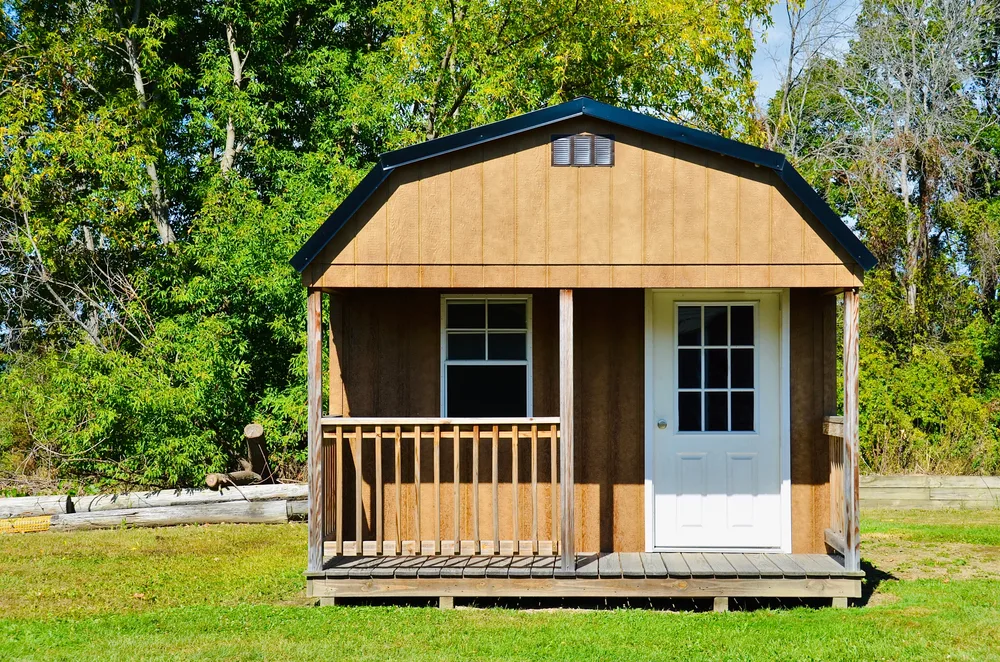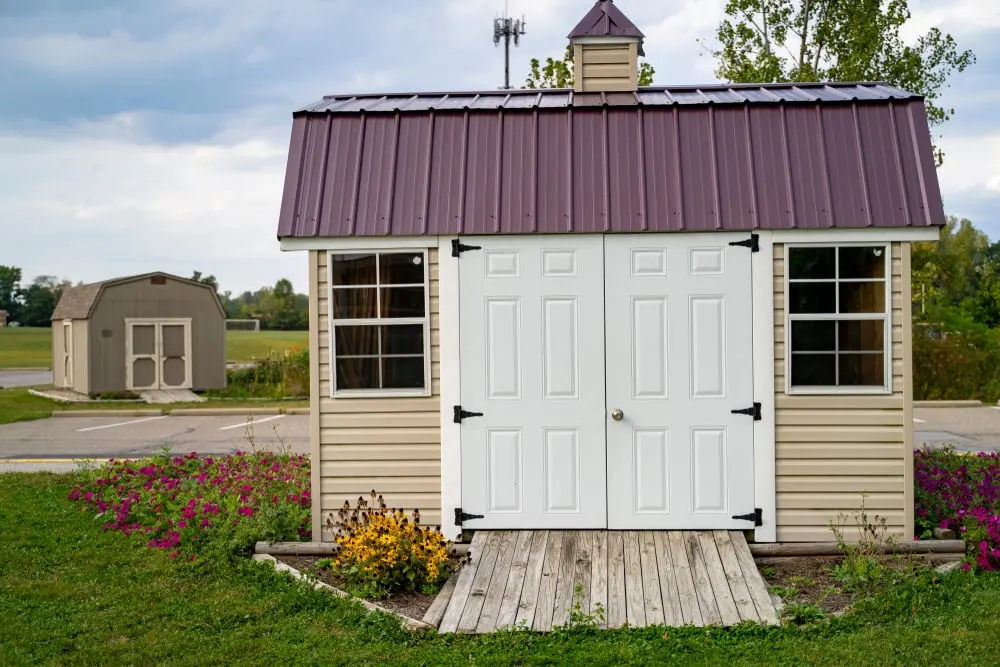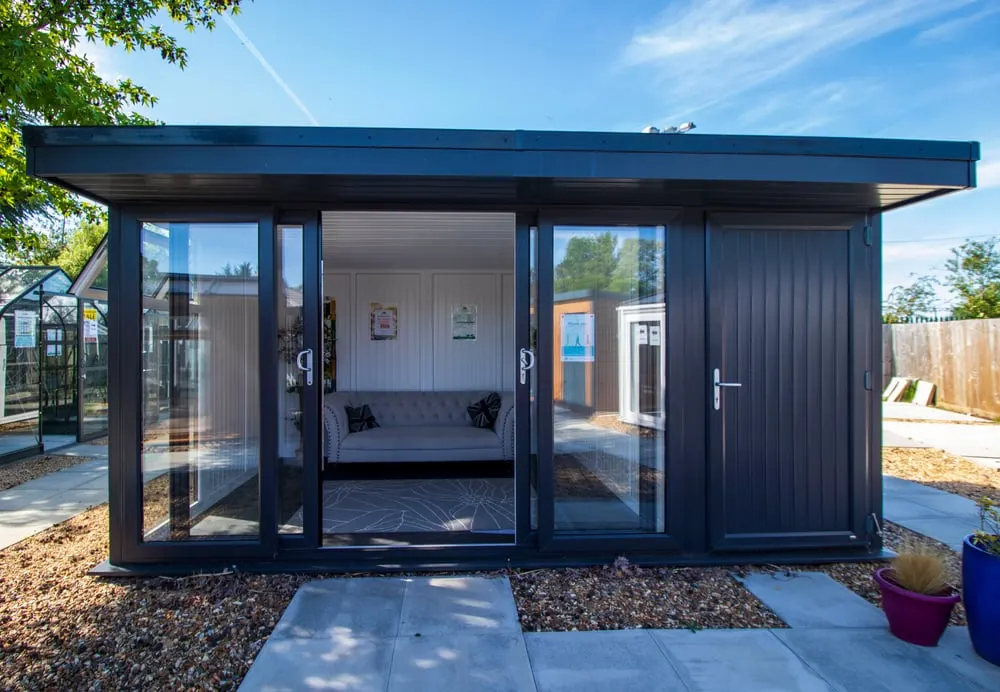A shed can be classified as either permanent or temporary, and knowing which applies to your shed is important for homeowners who want to build a shed on their property.
Are you wondering if your storage shed is considered a permanent structure? Understanding the classification of your shed can have important implications for your property and local regulations.
Whether a shed is considered a permanent structure or a temporary structure depends on several factors, including the intended use of the shed, the size of the shed, the materials used in its construction, and its foundation.
Our article breaks down the factors that determine whether a shed is considered permanent, including construction materials, foundation, and attachment to the property. Don’t miss out on this valuable information that can help you avoid fines and ensure compliance with local building codes. Read on to find out if your shed is permanent or temporary.
Is a Shed Considered a Permanent Structure?
A shed can be considered either a permanent structure or a temporary structure, depending on various factors.
Permanent structures are generally defined as structures that are intended to be built to last for a long time, typically more than a year, and are built on a foundation that is anchored to the ground. These structures may require permits from local zoning departments, must adhere to local zoning restrictions and are subject to building codes, such as the International Building Code.
On the other hand, temporary structures are not intended to be permanent and are often movable. They may not require a permit and may not have to adhere to the same zoning restrictions and building codes as permanent structures.
When it comes to sheds, the term “shed” can refer to a variety of outdoor buildings, including storage sheds, garden sheds, tool sheds, and even playhouses. Some sheds are built to be permanent structures, while others are built to be temporary.
Whether a shed is considered a permanent structure depends on several factors, including the intended use of the shed, the size of the shed, the materials used in its construction, and its foundation.
If a shed is intended to be used for storage or as an accessory structure, it is more likely to be considered a permanent structure. If the shed has plumbing fixtures or is intended to be used as living space, it is even more likely to be considered a permanent structure.
In terms of size, some local zoning restrictions dictate the maximum size of outdoor buildings or accessory structures that can be built without a permit. For example, some towns allow sheds up to 120 square feet without a permit, while others may allow larger sheds or no limit on shed size.
The materials used in the construction of the shed can also affect its classification as a permanent or temporary structure. Sheds that are made of wood or metal and have solid foundations, such as a concrete slab, are more likely to be considered permanent structures.
Finally, the foundation of the shed is another important factor in determining whether it is a permanent structure. If a new shed is built on concrete foundations that are anchored to the ground, it is more likely to be considered permanent. If the shed is simply placed on the ground without any type of foundation, it may be considered a temporary structure.
It’s important to note that if you live in a neighborhood with a homeowners association, there may be additional regulations regarding sheds or outdoor buildings that you will need to follow. If you are unsure about whether you need a permit or how to comply with local zoning restrictions, it’s always best to check with your local zoning department or a professional contractor.
What Type of Property is a Storage Shed?
A storage shed is typically considered an outdoor accessory structure, and its classification as a permanent or temporary structure will depend on its location, size, and purpose.
In most areas, a storage shed is a temporary structure that is placed in the backyard or side yard of a property. It is typically used for storage of items such as lawn equipment, gardening tools, and other outdoor gear. The shed is not intended to be used as a business, and it is not attached to the main house or garage.
The classification of a storage shed can vary by county or city regulations, and it may also depend on the type of property where it is located. For example, in some areas, a storage shed may be classified as a temporary structure if it is used to house livestock or is located on a farm property.
In most cases, a storage shed is considered a permanent structure if it has a solid foundation, such as a concrete slab, and a permanent roof. This type of shed is typically attached to the ground and is not intended to be moved. The size of the shed can also determine whether it is considered a permanent or temporary structure.
In some areas, a storage shed may be considered an accessory structure to the main house or building. This means that it is part of the same property and is subject to the same regulations and zoning laws as other buildings on the property.
When determining the classification of a storage shed, it is important to consider other buildings on the property as well. If there are other permanent structures on the property, such as a garage or a workshop, the shed may be considered a permanent structure as well.
In summary, a storage shed is typically considered a temporary structure that is used for outdoor storage. However, its classification as a permanent or temporary structure can vary depending on its size, location, and purpose.
A shed with a solid foundation and a permanent roof may be considered a permanent structure, while a shed without a foundation or with a temporary roof may be considered a temporary structure. It is important to check local zoning laws and regulations to determine the proper classification.
What is Classified as a Permanent Structure?
A permanent structure is a building or structure that is intended to be built to last for a long time, typically more than a year, and is constructed with a foundation that is anchored to the ground. This type of structure is designed to remain in place for a significant period of time and is not intended to be easily movable.
The classification of a structure as permanent can have legal implications, such as the requirement for building permits, adherence to zoning regulations, and compliance with building codes. Permanent structures are generally subject to more regulations and restrictions than temporary structures.
There are several factors that determine whether a structure is considered permanent, including its intended use, construction materials, size, and foundation.
The intended use of a structure can impact its classification as permanent. If the structure is intended to be used as living space, such as a house or apartment building, it is typically considered a permanent structure. Other structures that are used for commercial purposes, such as office buildings, warehouses, or factories, are also considered permanent structures.
Construction materials can also determine the classification of a structure. Buildings constructed with materials such as concrete, brick, or steel are typically considered permanent structures, as these materials are durable and long-lasting. On the other hand, buildings constructed with less durable materials, such as wood or fabric, may be considered temporary structures.
The size of a structure can also impact its classification. In some areas, structures under a certain size may be classified as temporary structures, while larger structures are considered permanent.
The foundation of a structure is an important factor in determining its classification as permanent. A permanent structure is typically built on a foundation that is anchored to the ground, such as a concrete slab or a foundation made of masonry or stone. This foundation provides stability and ensures that the structure will remain in place for a significant period of time.
What is Classified as a Temporary Structure?
A temporary structure is a type of building or structure that is designed to be used for a short period of time and is not intended to be a permanent fixture. These structures are often constructed with lightweight materials and may be free-standing or built on a non-anchored foundation. Examples include tents used for outdoor events and temporary storage sheds on construction sites.
As with guidelines for permanent buildings, the determining factors hinge on construction materials, size, foundation, and intention.
What Makes a Shed Permanent?
A shed can be considered permanent if it is built with durable materials, anchored to the ground, and attached to the property. A permanent shed is typically considered a structure that is intended to be a long-lasting fixture on a property, much like a house or other permanent building. In contrast, a temporary shed is designed to be easily moved or removed, and may be considered a portable or mobile structure.
Several factors can contribute to making a shed permanent, including its construction materials, foundation, and attachment to the property. If a shed is built with durable, long-lasting materials such as concrete, brick, or steel, it is more likely to be considered a permanent structure. In contrast, sheds constructed with less durable materials, such as wood or plastic, may be considered temporary.
The foundation of a shed can also play a role in its classification as permanent. A permanent shed is typically built on a foundation that is anchored to the ground, such as a concrete slab or a foundation made of masonry or stone. This provides stability and ensures that the shed will remain in place for a significant period of time.
Another factor that can make a shed permanent is its attachment to the property. If a shed is permanently attached to a building or main structure on the property, such as a house or garage, it may be considered a permanent fixture. Additionally, if a shed is built in the same location on the property for an extended period of time, it may also be classified as permanent.
Do I Need A Permit for a Pre-built Shed?
The need for a permit for a pre-built shed will depend on the local building code and the regulations of the local building department. Some cities and counties require permits for all structures built on a property, including pre-built sheds, while others may have specific exemptions for certain types or sizes of structures.
Before starting to build or install a pre-built shed, it is important to research the local codes and permit requirements to ensure that the shed is properly permitted. Building a shed without the required permits can result in fines or penalties, and may require costly modifications or removal of the structure.
In addition to permit requirements, there may be regulations related to the placement of a shed on a property. For example, sheds may need to be set back a certain distance from property lines or other structures to ensure safety and accessibility.
The cost of a permit for a pre-built shed will vary depending on the city or county and the specific requirements for the structure. In addition to the cost of the permit, there may also be fees for inspections or other requirements related to the permit process.
It is important to note that even if a prebuilt shed does not require a permit, it is still important to ensure that it is installed properly and meets all local codes and regulations. Failure to comply with local regulations can result in fines or penalties, and may also impact the value or saleability of the property in the future.
Before starting to build or install a shed, it is important to research the permit requirements and regulations related to the placement of the structure. Failure to comply with local codes and regulations can result in fines, penalties, or costly modifications or removal of the structure.









